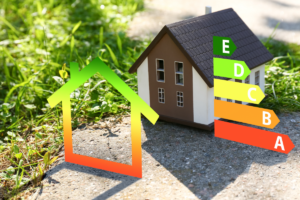What is BIM and How It Revolutionizes Sustainable Construction?
Building Information Modeling (BIM) is a sophisticated methodology that uses 3D models to streamline the design, construction, and operation of buildings. By integrating data and processes, BIM enhances collaboration among stakeholders and improves project outcomes. In sustainable construction, BIM plays a pivotal role in optimizing resource efficiency and reducing environmental impact.
Understanding the Principles of LEED Certification in Green Buildings
LEED (Leadership in Energy and Environmental Design) certification sets the standard for sustainable building design and construction. It evaluates projects based on criteria such as energy efficiency, water conservation, materials selection, and indoor environmental quality. Achieving LEED certification signifies a commitment to environmental stewardship and occupant well-being, aligning with global sustainability goals.
Integrating BIM and LEED Certification: A Holistic Approach
The synergy between BIM and LEED certification offers a comprehensive approach to sustainable building practices. BIM enables real-time analysis of design alternatives, simulation of energy performance, and visualization of environmental impacts. By integrating LEED requirements into BIM workflows from the outset, project teams can streamline certification processes and ensure compliance with sustainability criteria.
Environmental and Economic Benefits of Applying BIM and LEED Together
Combining BIM with LEED principles yields significant environmental and economic benefits. BIM enhances efficiency in resource use, reduces construction waste, and supports lifecycle management. LEED-certified buildings demonstrate lower operating costs, higher resale values, and enhanced marketability due to their sustainability credentials.
Inspiring Case Studies: How BIM Optimizes LEED Projects
Numerous case studies illustrate the transformative impact of BIM on LEED-certified projects. For instance, the use of BIM in designing passive solar strategies or optimizing natural ventilation systems can significantly contribute to achieving LEED’s energy efficiency goals. These examples highlight BIM’s capacity to innovate sustainable solutions that align with LEED requirements.
Challenges and Solutions in Implementing BIM for LEED Certification
Despite its benefits, integrating BIM into LEED certification processes can present challenges. These include data interoperability issues, upfront costs associated with BIM implementation, and the need for specialized training. Solutions involve leveraging collaborative BIM platforms, investing in interoperable software, and providing continuous education for project teams.
Essential BIM Tools and Technologies for Sustainable Projects
Key BIM tools essential for sustainable projects include 3D modeling software, energy analysis tools, and clash detection systems. These technologies enable designers to visualize energy flows, optimize building layouts for daylighting, and detect potential conflicts early in the design phase. Integrating these tools enhances project efficiency and supports LEED’s stringent performance criteria.
Practical Steps to Align Your Project with LEED Certification Requirements Using BIM
To align with LEED certification requirements using BIM, project teams should adopt a structured approach. This involves setting clear sustainability goals, conducting energy modeling simulations, and selecting eco-friendly materials. Integrating LEED credits into the BIM model ensures that sustainable strategies are embedded throughout the design and construction process.
Impact of BIM on Resource Management and Energy Efficiency in LEED-Certified Buildings
BIM’s impact on resource management and energy efficiency is profound in LEED-certified buildings. By facilitating detailed analysis of energy consumption patterns and lifecycle assessments, BIM supports informed decision-making and optimization of building performance. This capability is crucial for achieving and maintaining LEED certification levels, such as Gold or Platinum.
Future Trends: The Evolving Role of BIM in Certified Sustainable Construction
Looking ahead, BIM’s role in certified sustainable construction is poised to evolve further. Future trends include enhanced integration with IoT (Internet of Things) devices for real-time monitoring, advanced analytics for predictive maintenance, and augmented reality for onsite construction management. These innovations will empower project teams to push the boundaries of sustainability while meeting stringent LEED criteria.
In conclusion, the harmonious integration of BIM and LEED certification represents a transformative approach to sustainable construction. By leveraging BIM’s capabilities from design inception to facility management, stakeholders can achieve higher levels of environmental performance and occupant satisfaction. As technology advances and best practices evolve, BIM will continue to drive innovation and shape the future of green building practices worldwide.
https://itc.scix.net/pdfs/convr-2013-3.pdf





